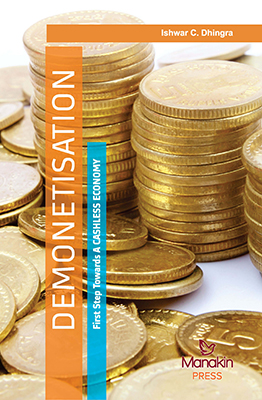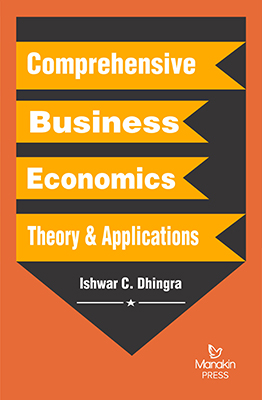Shivesh | Category: Economics
Book Details
ISBN: 9789386677761
YOP: 2018
Pages: 186
Order also on
This book overviews the interrelationship of stock indices, economic indicators and quality of life. It is a twofold research. The first part aims to investigate whether economic growth and stock market improvement has brought change in the quality of life of people post 1991. For a nation like India that is among the world’s fastest growing economies it is imperative to measure the economic well-being of its citizens on an ongoing basis. By tracking the various parameters that contribute towards the economic well-being of the people and their ability to protect themselves and their families against unforeseen crisis, the findings of this study would help to identify the determinants of economic well-being of India’s populace. This research looks at the component type of definition of quality of life i.e. material welfare. This research tries to find the degree of association of economy and stock market variables; hence it overlooks other aspects of quality of life i.e. emotional, physical, and social, etc. For primary study at the individual level, the quality of life is assessed with the help of a quality of life perception questionnaire circulated among the five cities of Mumbai, Delhi, Kolkata, Chennai and Bengaluru. It looks at the subjective aspect of quality of life as measured by the self report survey. For secondary study, i.e. at the societal level, the Human development index is taken as a proxy for quality of life. Some other QOL indices developed by past studies done by Vadlamannati & Tamazian in 2006 and Quality of life ranks of various countries published by the International living organization are also analysed.
Chapter 1: Introduction
Chapter 2: Review of Literature
Chapter 3: Research Methodology
Chapter 4: Hypothesis Testing and Analysis of Data
Chapter 5: Suggested Modern and conclusion
This book overviews the interrelationship of stock indices, economic indicators and quality of life. It is a twofold research. The first part aims to investigate whether economic growth and stock market improvement has brought change in the quality of life of people post 1991. For a nation like India that is among the world’s fastest growing economies it is imperative to measure the economic well-being of its citizens on an ongoing basis. By tracking the various parameters that contribute towards the economic well-being of the people and their ability to protect themselves and their families against unforeseen crisis, the findings of this study would help to identify the determinants of economic well-being of India’s populace. This research looks at the component type of definition of quality of life i.e. material welfare. This research tries to find the degree of association of economy and stock market variables; hence it overlooks other aspects of quality of life i.e. emotional, physical, and social, etc. For primary study at the individual level, the quality of life is assessed with the help of a quality of life perception questionnaire circulated among the five cities of Mumbai, Delhi, Kolkata, Chennai and Bengaluru. It looks at the subjective aspect of quality of life as measured by the self report survey. For secondary study, i.e. at the societal level, the Human development index is taken as a proxy for quality of life. Some other QOL indices developed by past studies done by Vadlamannati & Tamazian in 2006 and Quality of life ranks of various countries published by the International living organization are also analysed.
Chapter 1: Introduction
Chapter 2: Review of Literature
Chapter 3: Research Methodology
Chapter 4: Hypothesis Testing and Analysis of Data
Chapter 5: Suggested Modern and conclusion











